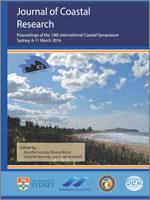Hanlon, L.M.; Abbott, L.K., and Kennedy, D.M., 2016. Coastal mycology and invasive species: Boundary conditions for arbuscular mycorrhizal (AM) fungi in incipient sand dunes. In: Vila-Concejo, A.; Bruce, E.; Kennedy, D.M., and McCarroll, R.J. (eds.), Proceedings of the 14th International Coastal Symposium (Sydney, Australia). Journal of Coastal Research, Special Issue, No. 75, pp. 283-287. Coconut Creek (Florida), ISSN 0749-0208.
Arbuscular mycorrhizal (AM) fungi are ubiquitous in soil, and are associated with some 90% of terrestrial vascular plants, aiding plants to access water and nutrients the plant roots alone cannot, in exchange for photosynthates from their host. AM fungi were first found in the dune system in the 1960s, and many of the described species have been found in dune ecosystems, where they form symbiotic associations with psammophilic plants including dune grasses. The ephemeral environment of incipient sand dunes prevents long-term colonization by plants, and little research has been undertaken to examine the contribution of AM fungi to plant survival in the disturbed environment of incipient sand dunes, or what role, if any, they play in exotic plant species outcompeting native species. A first step to understanding these roles is to examine the edaphic and biological conditions of incipient dunes. Our findings quantify the boundary conditions that surround and support AM fungi and their host plant roots in incipient sand dunes on the southern coast of Victoria, and include the chemical and geomorphological characterizations of the dunes studied. We found the nutrient levels (TOC, P, and N) to be low, in contrast to the higher levels of N found on the Atlantic coast, and pH levels such that Al would be toxic for the majority of plants, whilst Fe is limited. Additionally, we found that the incipient dune sand was not saline, and that chemical characteristics between the toe and the crest of the incipient dune did not differ greatly.





